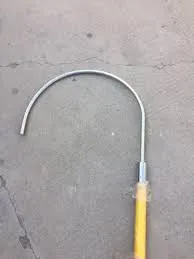
-
 Afrikaans
Afrikaans -
 Albanian
Albanian -
 Amharic
Amharic -
 Arabic
Arabic -
 Armenian
Armenian -
 Azerbaijani
Azerbaijani -
 Basque
Basque -
 Belarusian
Belarusian -
 Bengali
Bengali -
 Bosnian
Bosnian -
 Bulgarian
Bulgarian -
 Catalan
Catalan -
 Cebuano
Cebuano -
 Corsican
Corsican -
 Croatian
Croatian -
 Czech
Czech -
 Danish
Danish -
 Dutch
Dutch -
 English
English -
 Esperanto
Esperanto -
 Estonian
Estonian -
 Finnish
Finnish -
 French
French -
 Frisian
Frisian -
 Galician
Galician -
 Georgian
Georgian -
 German
German -
 Greek
Greek -
 Gujarati
Gujarati -
 Haitian Creole
Haitian Creole -
 hausa
hausa -
 hawaiian
hawaiian -
 Hebrew
Hebrew -
 Hindi
Hindi -
 Miao
Miao -
 Hungarian
Hungarian -
 Icelandic
Icelandic -
 igbo
igbo -
 Indonesian
Indonesian -
 irish
irish -
 Italian
Italian -
 Japanese
Japanese -
 Javanese
Javanese -
 Kannada
Kannada -
 kazakh
kazakh -
 Khmer
Khmer -
 Rwandese
Rwandese -
 Korean
Korean -
 Kurdish
Kurdish -
 Kyrgyz
Kyrgyz -
 Lao
Lao -
 Latin
Latin -
 Latvian
Latvian -
 Lithuanian
Lithuanian -
 Luxembourgish
Luxembourgish -
 Macedonian
Macedonian -
 Malgashi
Malgashi -
 Malay
Malay -
 Malayalam
Malayalam -
 Maltese
Maltese -
 Maori
Maori -
 Marathi
Marathi -
 Mongolian
Mongolian -
 Myanmar
Myanmar -
 Nepali
Nepali -
 Norwegian
Norwegian -
 Norwegian
Norwegian -
 Occitan
Occitan -
 Pashto
Pashto -
 Persian
Persian -
 Polish
Polish -
 Portuguese
Portuguese -
 Punjabi
Punjabi -
 Romanian
Romanian -
 Russian
Russian -
 Samoan
Samoan -
 Scottish Gaelic
Scottish Gaelic -
 Serbian
Serbian -
 Sesotho
Sesotho -
 Shona
Shona -
 Sindhi
Sindhi -
 Sinhala
Sinhala -
 Slovak
Slovak -
 Slovenian
Slovenian -
 Somali
Somali -
 Spanish
Spanish -
 Sundanese
Sundanese -
 Swahili
Swahili -
 Swedish
Swedish -
 Tagalog
Tagalog -
 Tajik
Tajik -
 Tamil
Tamil -
 Tatar
Tatar -
 Telugu
Telugu -
 Thai
Thai -
 Turkish
Turkish -
 Turkmen
Turkmen -
 Ukrainian
Ukrainian -
 Urdu
Urdu -
 Uighur
Uighur -
 Uzbek
Uzbek -
 Vietnamese
Vietnamese -
 Welsh
Welsh -
 Bantu
Bantu -
 Yiddish
Yiddish -
 Yoruba
Yoruba -
 Zulu
Zulu


Sep . 24, 2024 15:37 Back to list
Connecting Earth Cable to Ground Rod with Measuring Wheel for Accurate Installation
Connecting Earth Cable to Earth Rod A Comprehensive Overview
In electrical installations, ensuring safety and compliance with regulations is paramount. One crucial component of this is the proper connection of the earth cable to the earth rod. This connection helps to safeguard both equipment and individuals from electrical faults by providing a low-resistance path to the ground.
Understanding Earth Rods and Their Purpose
An earth rod, typically made of copper or galvanized steel, is driven into the ground to create a direct link to the earth. Its primary function is to dissipate electrical energy safely into the ground during a fault condition, thus preventing electric shock or fire hazards. The effectiveness of an earth rod is influenced by several factors including soil moisture content, chemical composition, and temperature.
Choosing the Right Earth Cable
When connecting an earth cable to an earth rod, it is essential to choose the right type of cable. The cable should have sufficient gauge to handle potential fault currents without overheating or breaking. Common choices include copper or aluminum conductors, with copper being preferred for its superior conductivity and durability. The cable should also be resistant to corrosion, especially if it is installed in damp or chemically aggressive environments.
Measuring the Resistance
Once the earth cable is connected to the earth rod, measuring the resistance of the grounding system is a vital step. Tools like a digital multimeter or a specialized earth resistance tester can be used. The acceptable resistance level generally should be below 5 ohms, as specified by many electrical codes. This ensures that the grounding system will function effectively during a fault.
connecting earth cable to earth rod - measuring wheel

Connection Procedure
1. Preparation Ensure that all tools and materials are ready. Wear appropriate safety gear, including gloves and goggles. 2. Cutting and Stripping Cut the earth cable to the required length, typically enough to reach from the grounding system to the earth rod, and strip the ends of the cable for connection.
3. Connecting Securely attach one end of the earth cable to the earth rod using appropriate connectors or clamps. Make sure the connection is tight to minimize resistance.
4. Testing Once connected, use a multimeter to test the continuity and measure the resistance of the earth connection.
5. Securing the Installation Finally, insulate any exposed connections with weatherproof material to protect against moisture and corrosion.
Conclusion
Connecting an earth cable to an earth rod is a critical process in establishing an effective grounding system. By ensuring proper installation and testing, one can protect not only electrical systems but also the safety of individuals who may come into contact with them. Always follow local regulations and standards to ensure a compliant and safe installation.
Latest news
What Are Construction Tools and How Are They Used?
NewsJul.11,2025
Professional-Grade Duct Rodding Tools for Superior Cable Installation
NewsJul.11,2025
Enhancing Safety and Efficiency with Modern Hot Stick Solutions
NewsJul.11,2025
Empowering Cable Installation with Advanced Rodder Solutions
NewsJul.11,2025
Elevate Your Cable Installation Projects with Cable Pulling Tools
NewsJul.11,2025
Efficient Cable Handling Solutions: Cable Rollers for Sale
NewsJul.11,2025











